President-elect Donald Trump and some of his senior advisors have stressed the need to focus on radical Islam and criticized President Obama for avoiding that specific label, writes Dan Byman. It is tempting to dismiss the newcomers’ views as naïve and bigoted, but thinking about “radical Islam” has serious intellectual pedigree. This post originally appeared on Lawfare.
Who is the enemy in American counterterrorism? Is it the Islamic State, the broader jihadist movement, or a set of ideas about the role of religious and politics, often labeled “radical Islam?”
The President-elect and some of his senior advisors have stressed the need to focus on radical Islam and criticized President Obama for avoiding that specific label. “I think Islam hates us,” warned Trump on the campaign trail. When pressed about who, specifically, was the enemy, he contended that a narrow label risked missing part of the danger: “it’s very hard to define. It’s very hard to separate. Because you don’t know who’s who.”
Michael Flynn, Trump’s incoming National Security Advisor, similarly warned, “We’re in a world war against a messianic mass movement of evil people, most of them inspired by a totalitarian ideology: Radical Islam.” Steve Bannon, one of the President-elect’s principle advisors, compared the situation today to when Christendom held the forces of Islam at bay in the battles of Vienna and Tours. Perhaps even worse than the threat of terrorism, some Trump advisors warn that Muslims are secretly planning to implement Islamic religious law in the United States and the West in general.
Such a perspective is a dramatic switch from the policies of Presidents Obama and Bush. In an excellent article in The Atlantic, Uri Friedman contrasts the Trump team’s views with that of preceding administrations. Fighting terrorism, for the new regime, is about fighting a broad ideology, not a particular set of violent individuals who join the Islamic State, al-Qaida, or another group.
It is tempting to dismiss the newcomers’ views as naïve and bigoted, but thinking about “radical Islam” has serious intellectual pedigree. The historian Bernard Lewis penned a famous piece back in 1990 for The Atlantic, warning of a civilizational clash with: “a rejection of Western civilization as such, not only what it does but what it is, and the principles and values that it practices and professes.” And the label has at least some conceptual merit. The Islamic State, of course, is the latest focus of U.S. counterterrorism, succeeding al-Qaida as America’s top priority after the U.S. started bombing the group in the summer of 2014 and its subsequent campaign of terrorist attacks—a few directed, more inspired—in Europe and the United States. Indeed, the Islamic State’s rise and al-Qaida’s decline are related and make sense in the context of a focus on the broader movement rather than a particular group: as one faction declines, others rise, and the movement as a whole remains robust.
Indeed, the Islamic State and al-Qaida are only two jihadist groups among many. Al-Qaida has affiliates throughout the Middle East that work with the mother movement, at least fitfully. Similarly, the Islamic State claims “provinces” in other countries, with some, such as the one in Libya, having close ties to the Syria-Iraq core while others, like that in Nigeria, are far more removed. In addition, there are unaffiliated groups like Ansar-e Sharia in Libya or Ahrar al-Sham in Syria, which may not be subordinate to either the Islamic State or al-Qaida but are still violent and anti-American. Individuals from one group often flow to another depending on opportunity, circumstances, and relative prestige.
The label “Radical Islam” also brings in a range of individuals and actors that do not neatly fit one group or another and may even move back and forth among the bodies in the broader jihadist universe. In particular, this might include “lone wolves”—individuals who are not under the direct control of a terrorist group but are inspired to act by its message. Omar Mateen, the Orlando shooter, was not really a member of al-Qaida or the Islamic State, yet he was a jihadist terrorist. For the United States in particular, these lone wolves have proven the biggest terrorism danger to the U.S. homeland in recent years.
The problem, of course, is that the label “Radical Islam” is so big as to be confusing, meaningless, or even contradictory. Much of the issue concerns what “radical” means. Let’s take three possibilities:
- First, radical means just what a dictionary would say: “advocating or based on thorough or complete political or social reform.” As this language suggests, here we would include countries and movements that are political but peaceful. So this might include allied governments like Saudi Arabia, which embrace the role of Islam at all levels of society and often promulgate attitudes toward non-Muslims and women, among other teachings, that Western audiences would find offensive, as well as missionary groups like the Tablighi Jamaat, which claim to be apolitical but some of whose teachings on social behavior are extreme and overlap with some of those of clear terrorist groups like the Islamic State. It also might include the Muslim Brotherhood, which has many variations in the many different countries where it has a presence but in most calls on Muslims to use peaceful politics to increase the role of Islam in government and society.
- Second, radical simply means violent. For most Americans, the terrorism problem is about killing, not ideas they don’t like. But many violent Islamists are not inherently violent toward the United States. They might oppose the government of Egypt, India, Russia, Tunisia, or other countries instead and not see the United States as an enemy. And even if they applaud when Americans are killed, they may not prioritize their enmity, focusing their aims elsewhere.
- Third, radical could be used to mean violent and anti-United States. But here the label starts to overlap with those of existing groups and individuals who are already on U.S. terrorism and targeting lists. Using the radical Islam label doesn’t really change policy as a result.
As Friedman points out:
“Obama has launched information campaigns to discredit ISIS and enlisted Middle Eastern countries in the battle against jihadism. He has encouraged Muslims to condemn the extremists in their midst and subjected Syrian refugees to what Trump might call “extreme vetting.” He has relied on government surveillance to fight terrorism, neutralized the most alarming aspect of the threat posed by Iran, and built a reputation as a formidable terrorist hunter by using military force against jihadist leaders and operatives in a number of countries.”
At home, it might mean more vigorous screening for Muslim immigrants to ensure they don’t embrace supposedly radical ideas, even if they reject violence—a difficult challenge, to say the least, as well as one of dubious constitutionality. My Brookings colleague Will McCants makes a compelling comparison of proposals to ban those who favor Islamic law to how Europe treated Jews until the modern era, seeing them as a people apart whose religious teachings were inherently subversive. Many Americans might disagree with the teachings such groups espouse, but their teachings fit under American notions of free speech and freedom of religion—the Klan, PETA, and other organizations are also zealous believers in ideas many Americans oppose, but the law still protects these groups.
The risks for counterterrorism are considerable. A broader war means more enemies, more military deployments, and more relations with troubling and troubled allies. Fighting a radical message is even harder, entailing not just a far more expansive military and intelligence campaign but also an array of policies to suppress or counter Islamism, including some measures in the United States such as silencing certain preachers and censoring propaganda that would go directly against free speech and the free practice of religion. The U.S. track record with such programs under both Bush and Obama is poor, suggesting that any future successes are likely to be modest at best.
Using the label also risks missing opportunities or adding unnecessary burdens, as many of these groups fight one another more than each other. Al-Qaida and the Islamic State are deadly rivals. And both hate the Shiite power Iran, which also embraces a violent form of political Islam. Relatively few Islamist groups are currently prioritizing attacks on the U.S. homeland, and there is little to be gained by taking them on directly—when in doubt, the United States should be bolstering the efforts of local allies.
The biggest danger is that targeting non-violent religious Muslims and using expansive rhetoric to demonize an entire faith risks driving some Muslims into the ranks of more violent groups and, given the unpopularity of the United States, making the radical cause more credible. Even some who still oppose violence would be less inclined to work with local police and federal officials, fearing that these institutions would target them.
The nice thing about a vague label like “Radical Islam” is that even if the new administration feels compelled to keep it for political reasons, it can be interpreted narrowly in practice. Indeed, the ideal would be to encourage individuals who might otherwise use violence to see peaceful politics as their friend. They would then join the long list of zealots conquered by the moderation U.S. politics and society have historically encouraged.
The Brookings Institution is committed to quality, independence, and impact.
We are supported by a diverse array of funders. In line with our values and policies, each Brookings publication represents the sole views of its author(s).

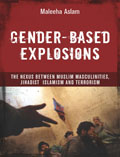

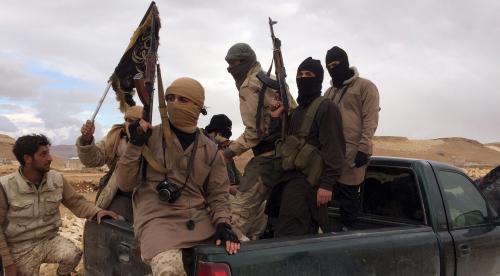
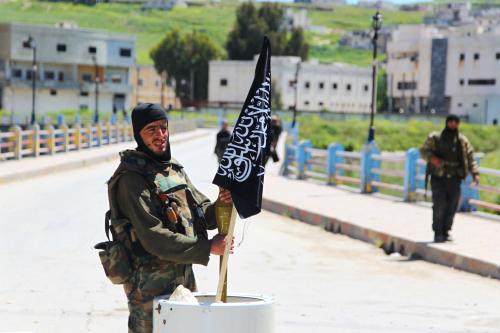
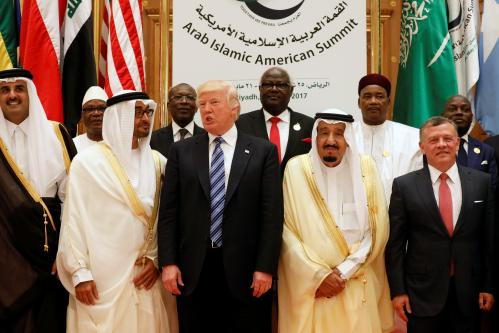
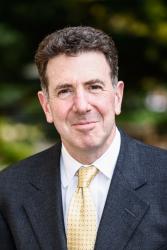
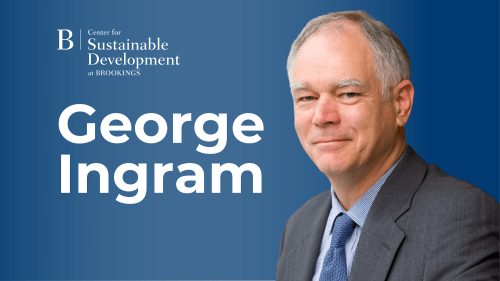

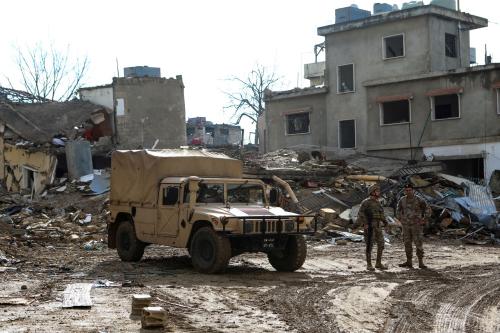
Commentary
What does it mean to be at war with “radical Islam”? On the attractions and dangers of a vague term
January 4, 2017